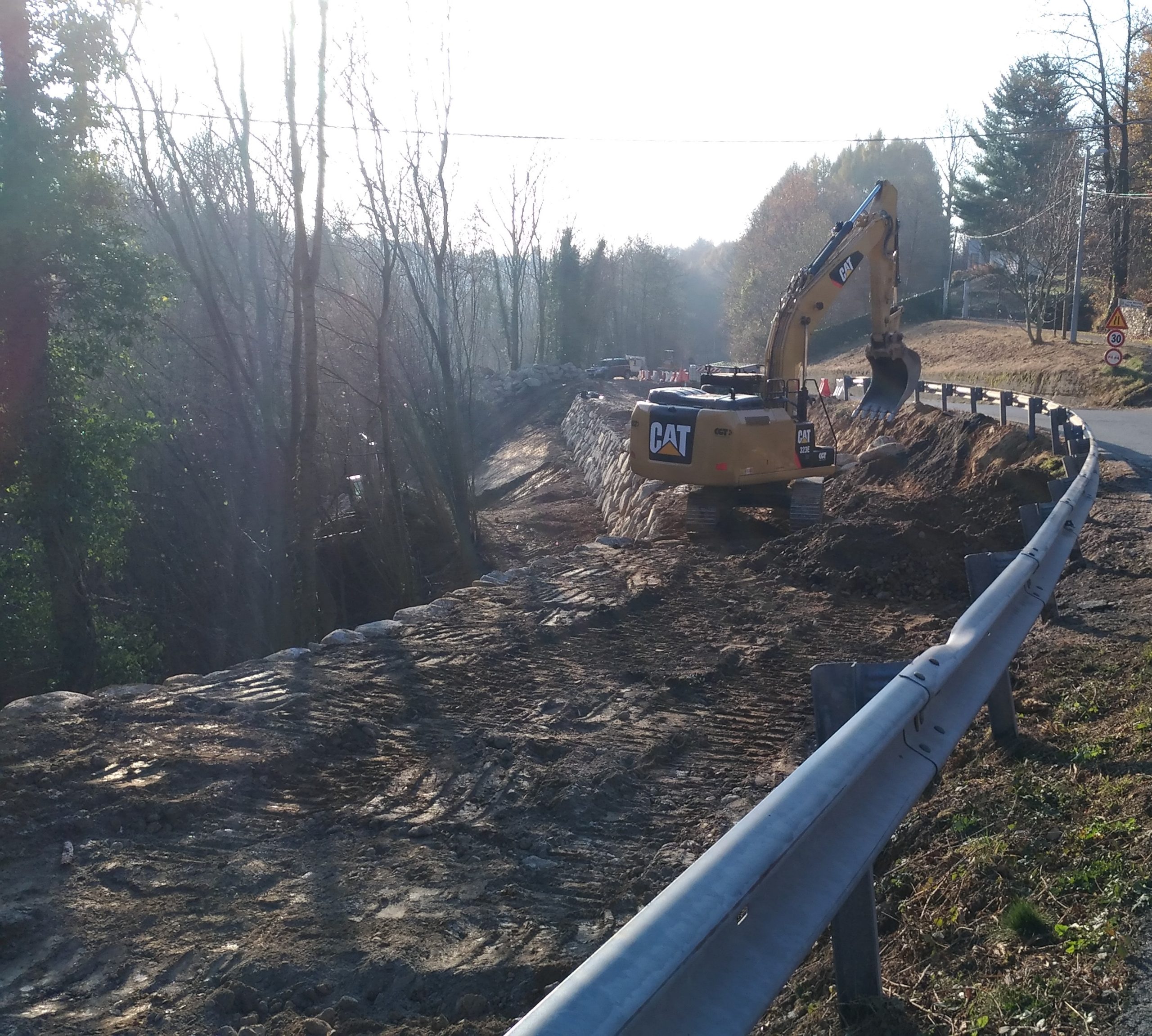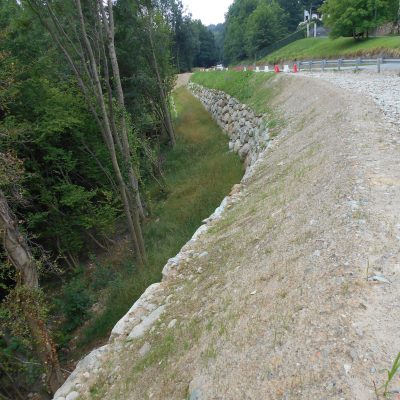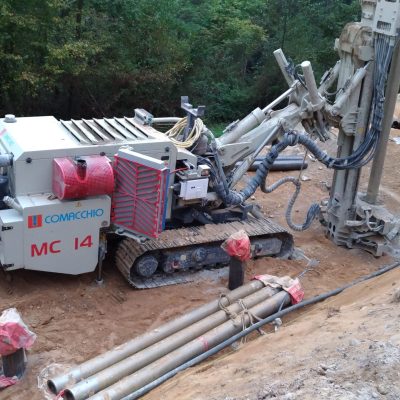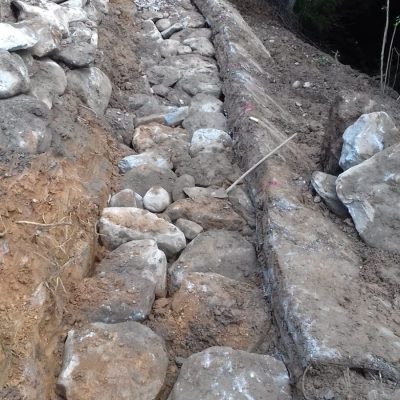
REMEDIATION INTERVENTIONS OF HYDROGEOLOGICAL DISORDERS
REMEDIATION INTERVENTIONS OF HYDROGEOLOGICAL DISORDERS
Client: Comune di Borgiallo
Budget: € 459.243,52
Structure Design: Sertec srl
Hydraulic Design: Sertec srl
Construction Management: Sertec srl
Safety: Sertec srl
Sertec Engineering Consulting has developed the project for the consolidation of the downstream slope of the SP 45 in the Municipality of Borgiallo. The consolidation intervention is based on a broader “Storage of unstable slopes” project financed by ReNDis.
The municipality of Borgiallo, located in the Sacred Valley, is characterized by a densely wooded hilly landscape. Despite the valuable landscape and climate characteristics, the area has been subject to severe meteorological events over the last twenty years which have highlighted the geomorphological fragility of the territory, causing extensive damage to infrastructure and property. The most critical area corresponds to the slope of the right bank of the Rio San Giacomo, west of the Boch hamlet where the SP45 passes, the main access road to the town. The assignment involved the analysis of the site from a geological-geomorphological and geotechnical point of view, identifying the geological and hydrogeological problems inherent to the active instability phenomena.
The project is characterized by two distinct interventions, both carried out with the same characteristics:
♦ lot 1: construction of a containment work on the mountain slope with a wall made of uncemented boulders. The design of the wall, 30m high, is functional to supporting the slope, guaranteeing its stability over time, thus avoiding the phenomena of collapse of the ground and road surface. Support works were also carried out on the right bank side of the river through a cliff founded on micropiles.
♦ lot 2: consists of three sections of cliff and two sections of double-walled wooden piling. In the first instance, a water collection ridge was created along the axis of the defense work. The walls of the trench are lined with non-woven fabric. The trench has a longitudinal development of 72 m and is built behind the existing road, upstream from the existing cliff. Subsequently, 4 portions of cliff were built on micropiles characterized by uncemented quarry boulders. The bulkhead was secured by installing passive tie rods of variable length depending on the section in question. Overall, 41 micropiles and 16 tie rods were created.




